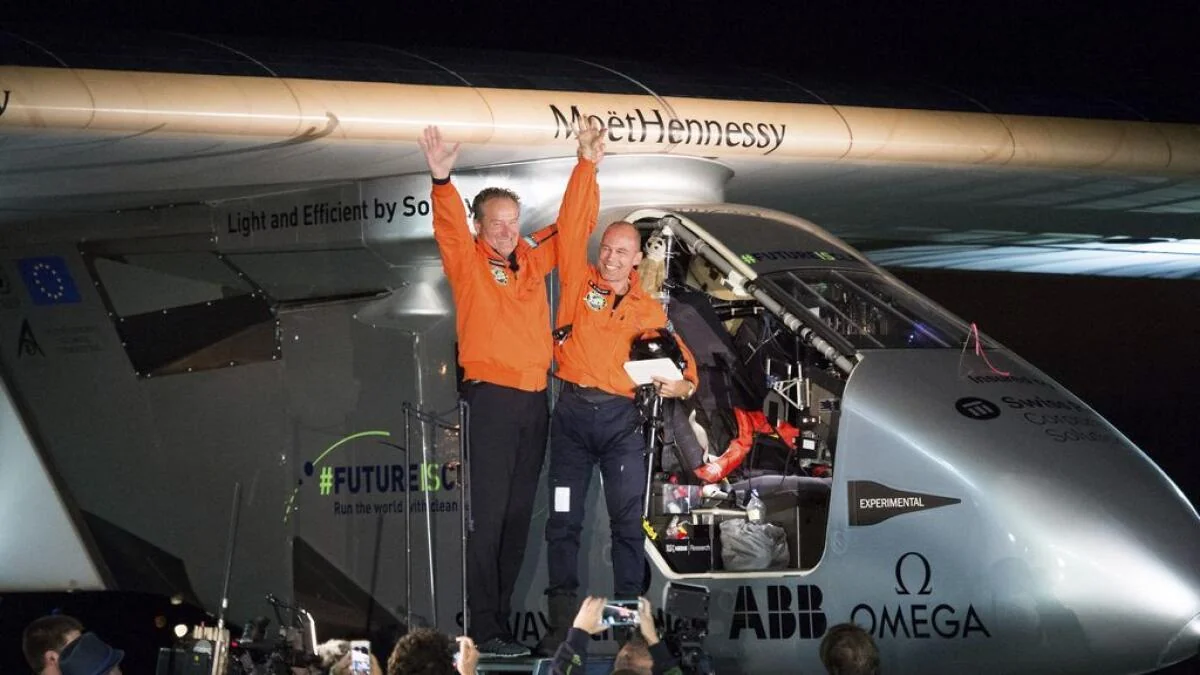
Solar Impulse II by Bertrand Piccard and André Borschberg Becomes First Solar-Powered Aircraft to Complete a Round-the-World Journey
Fiona Nanna, ForeMedia News
5 minutes read. Updated 8:03AM GMT Thurs, 29August, 2024
Solar Impulse II Completes Historic Round-the-World Trip Powered Entirely by Solar Energy
The Solar Impulse II, a Swiss-engineered prototype, has made history as the first solar-powered airplane to successfully complete a round-the-world journey. The extraordinary adventure began on March 9, 2015, and took 504 days to complete, covering 41,952 kilometers in 17 stages. Overcoming numerous challenges, both technical and economic, the team behind Solar Impulse II has pushed the boundaries of sustainable aviation and showcased the potential of renewable energy on a global scale.
The Beginning of an Ambitious Project
The project was initiated in 2005 by two visionary pilots, Bertrand Piccard and André Borschberg. Their goal was to prove that clean technologies can achieve the impossible and promote sustainable energy solutions worldwide. After years of dedicated research and development, the Solar Impulse II prototype took its first test flight in April 2010. These early flights were crucial in understanding the dynamics of flying an aircraft powered solely by the sun, setting the stage for what would become a record-breaking journey.
Record-Breaking Feats and Technical Innovations
Solar Impulse II achieved several significant milestones during its journey. It set a world record for the longest flight by a solar-powered aircraft, flying continuously for 26 hours and 9 minutes, and reaching a record altitude of 8,564 meters. Powered by four electric motors, each producing 7.5 kW (10 hp), and a wingspan of 204 square meters covered with 17,248 solar cells, the aircraft’s design allowed it to sustain long flights without a single drop of conventional fuel.
Weighing just 2,300 kg, Solar Impulse II traveled at an average speed of 75.2 km/h, reaching altitudes of up to 8,874 meters. These achievements highlight the plane’s advanced aerodynamics and lightweight structure, which were critical in optimizing its energy efficiency and maintaining power throughout the day and night.
The Journey Across the World
The route of Solar Impulse II took it across multiple continents, including Asia, North America, Europe, and the Middle East. Each stage of the journey presented unique challenges, from navigating unpredictable weather patterns to ensuring the endurance and safety of both the aircraft and its pilots. The trip was marked by several memorable moments, such as the longest leg from Nagoya, Japan, to Hawaii, which took nearly five days of continuous flying. This leg alone showcased the resilience of the aircraft and its team, who had to manage energy reserves meticulously and adapt to unforeseen circumstances.
A Step Forward for Sustainable Aviation
The success of Solar Impulse II is more than just a triumph of technology; it represents a shift in the mindset towards sustainable aviation and renewable energy. Bertrand Piccard and André Borschberg’s mission was not just to fly around the world but to inspire future generations to believe in the power of clean technologies. With this achievement, they have demonstrated that innovation, coupled with determination and vision, can break through barriers that once seemed insurmountable.
Future Prospects
The journey of Solar Impulse II is expected to pave the way for future developments in sustainable aviation technology. As the world grapples with climate change and the need for cleaner energy sources, the accomplishments of Solar Impulse II offer a promising glimpse into the future of aviation.

